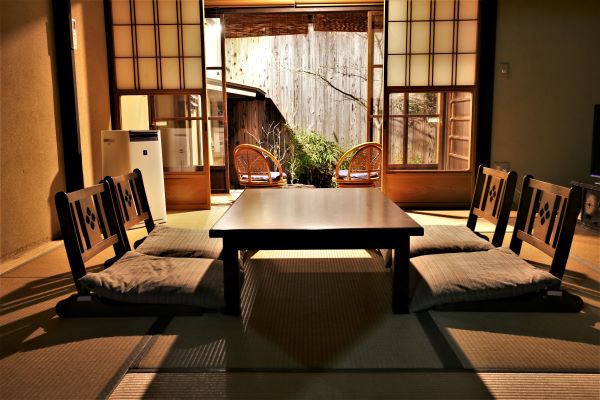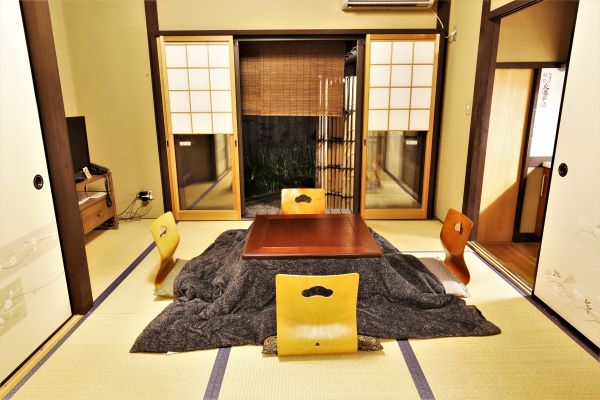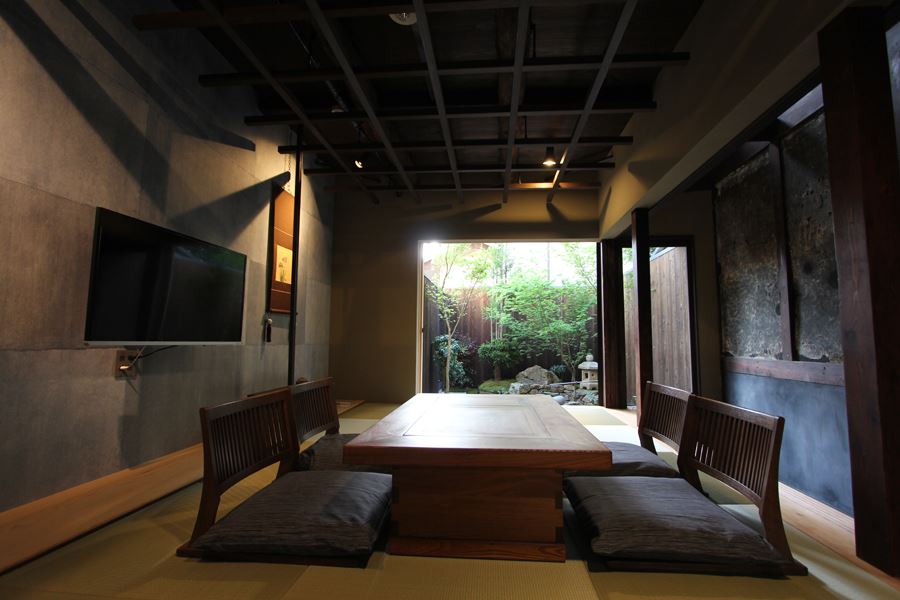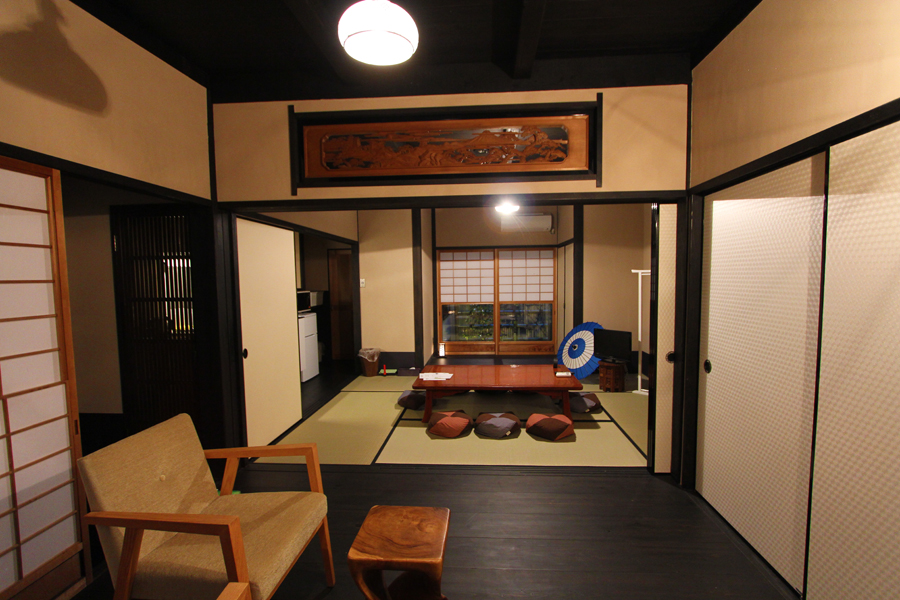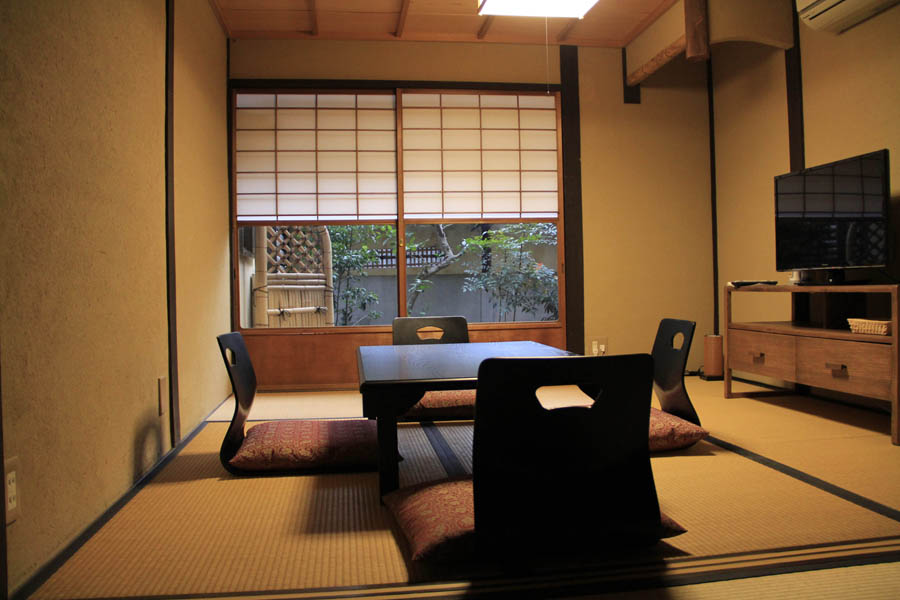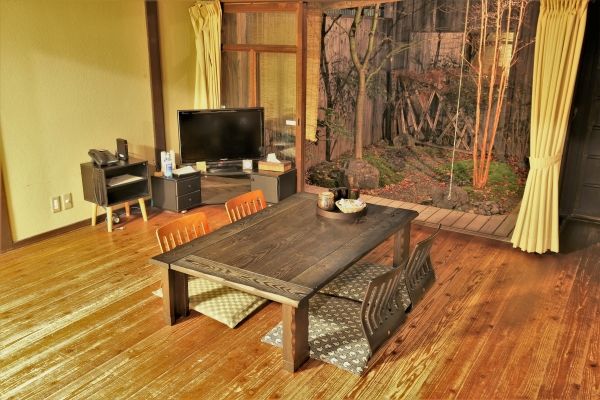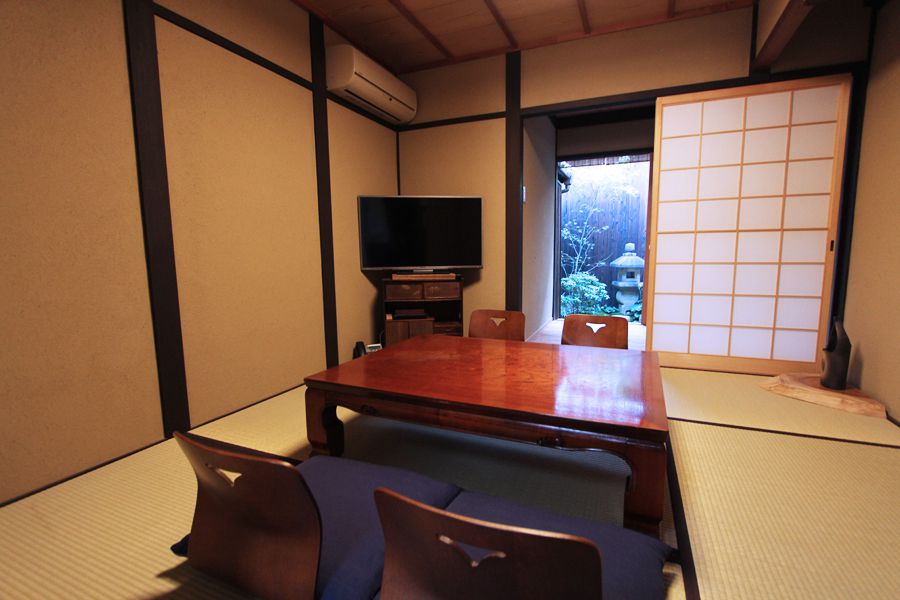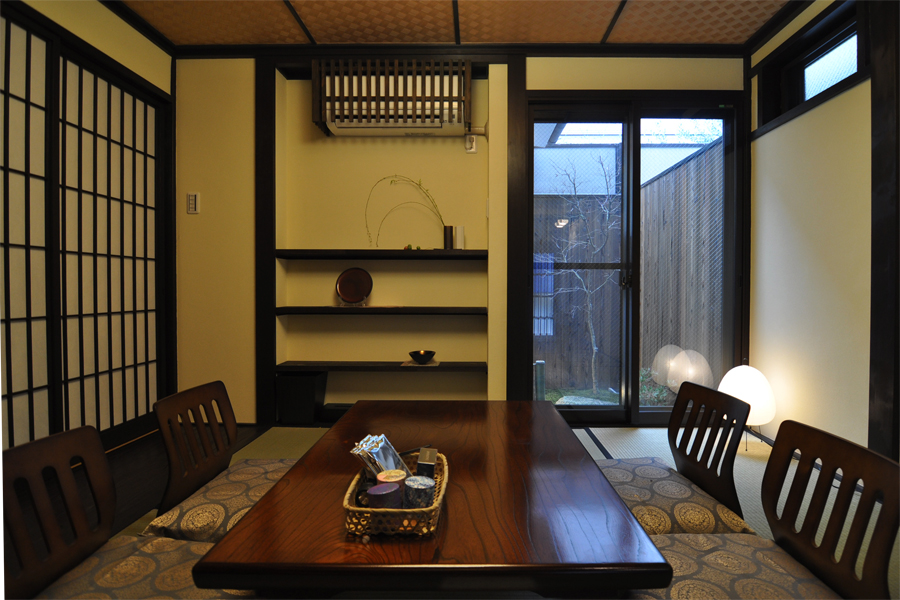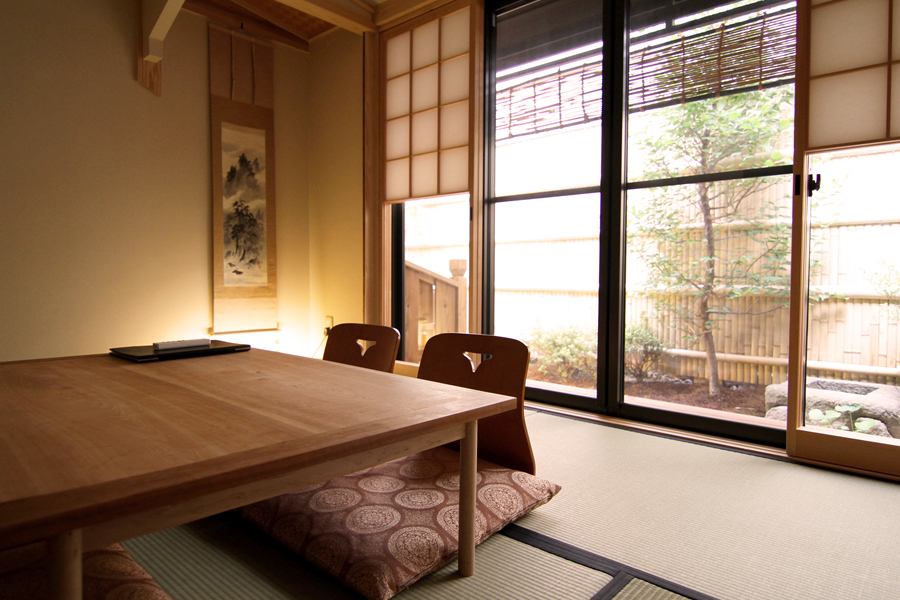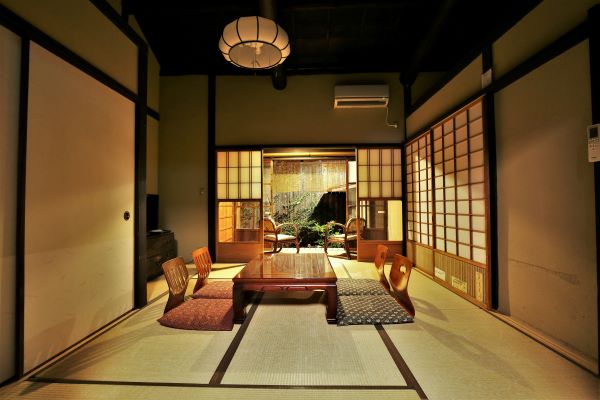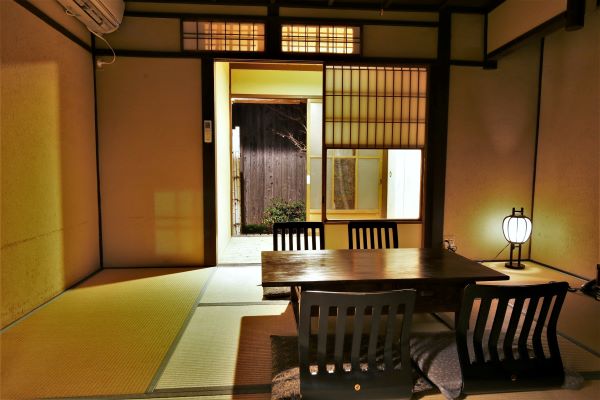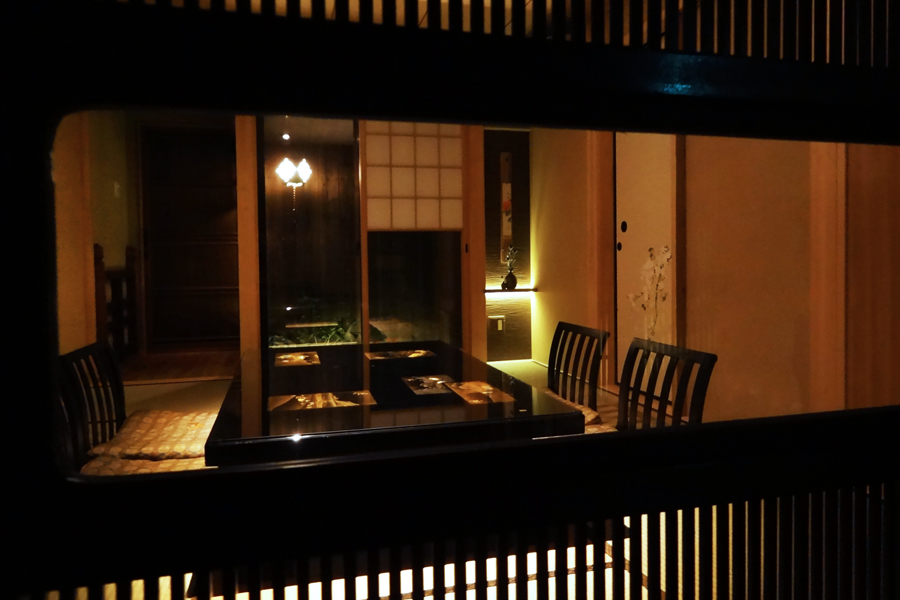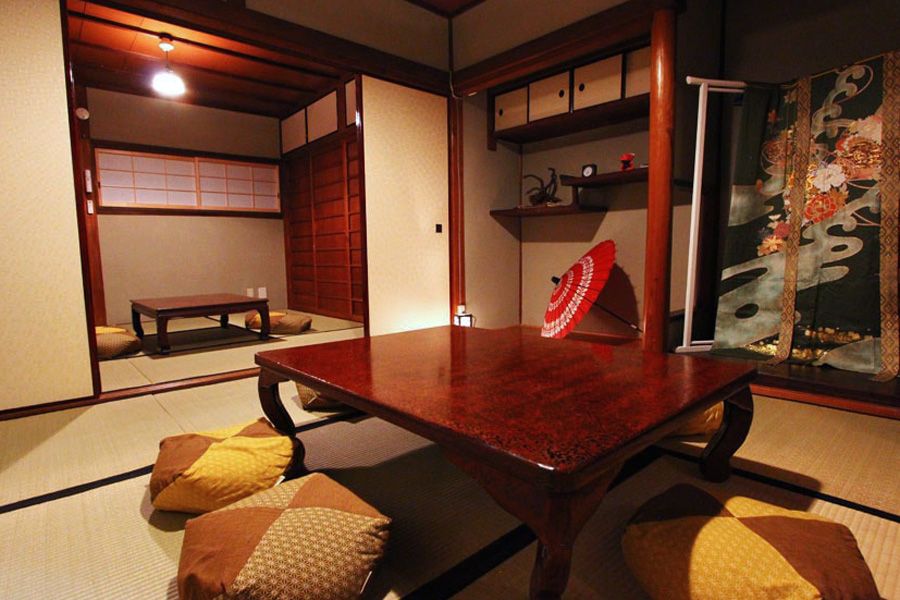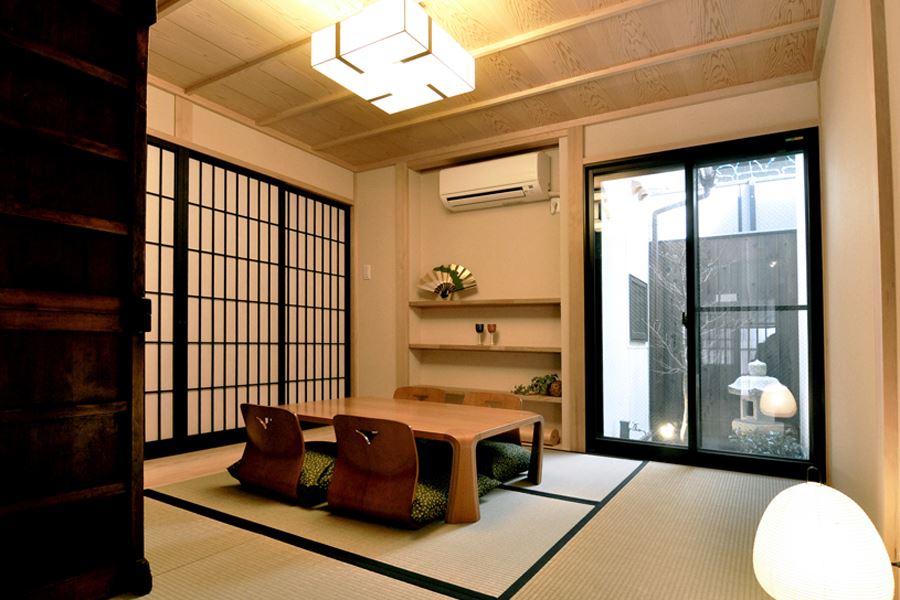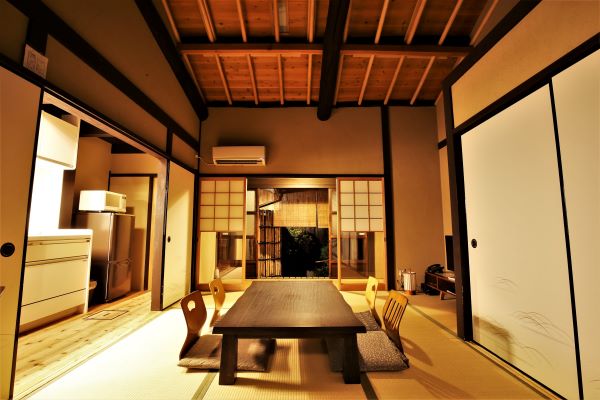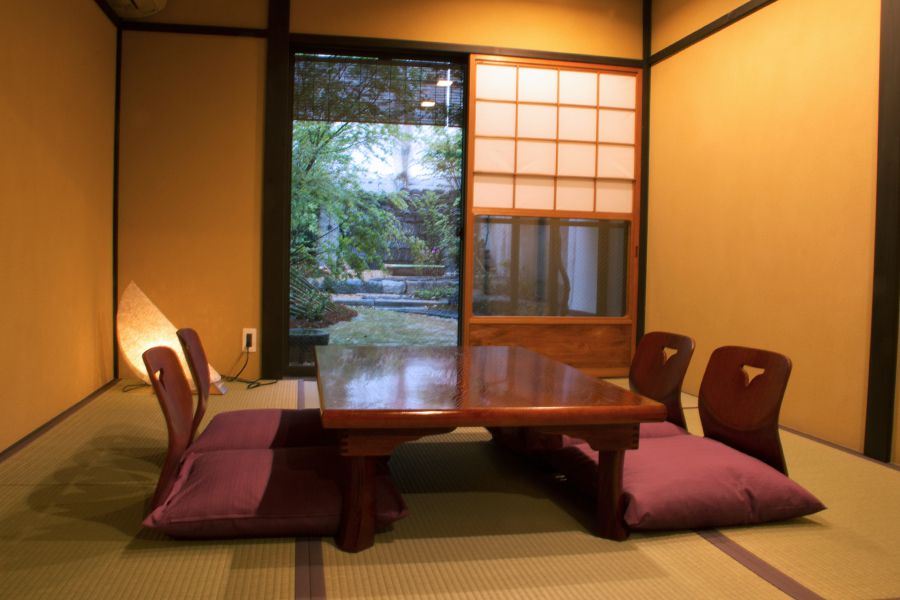Machiya inn Kyoto
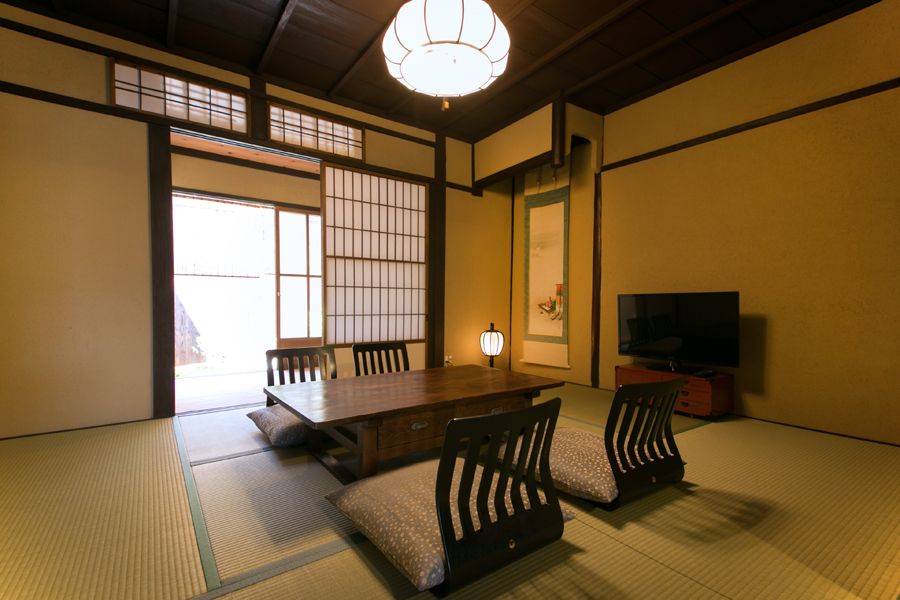
Heian-kyu
![]()
![]()
![]()
![]()
![]()
![]()
![]()
Heian Palace Machiya Inn
Near the grounds of the former Heian Imperial Palace, a quiet cluster of restored machiya townhouses offers a way of meeting Kyoto that feels less like a visit and more like a life. Each morning begins with the simple act of sliding open a wooden lattice door, as though you were setting out from your own home.
History surrounds the neighborhood. Within walking distance lie the Kyoto Imperial Palace, the stone walls of Nijo Castle, and the shrine of Kitano Tenmangu. In Nishijin, the looms of the weaving district still echo faintly with tradition, while to the east the Kamo River flows on—its banks alive with joggers, egrets, and couples strolling at dusk.
Inside, time seems layered. Tatami floors and wooden beams speak of the past, pocket gardens breathe with the seasons, and yet the ease of the present is quietly present: a kitchen for simple meals, a washing machine for long stays, Wi-Fi when the outside world calls. Some houses even provide bicycles, letting you slip easily into the backstreets where Kyoto reveals itself most intimately.
Whether for two people seeking a retreat or a gathering of friends and family, the houses adapt with ease. Guests often remark that staying here feels nothing like a hotel, but more like inhabiting a fragment of Kyoto itself—where memory and everyday life meet beneath the roof of a townhouse.


